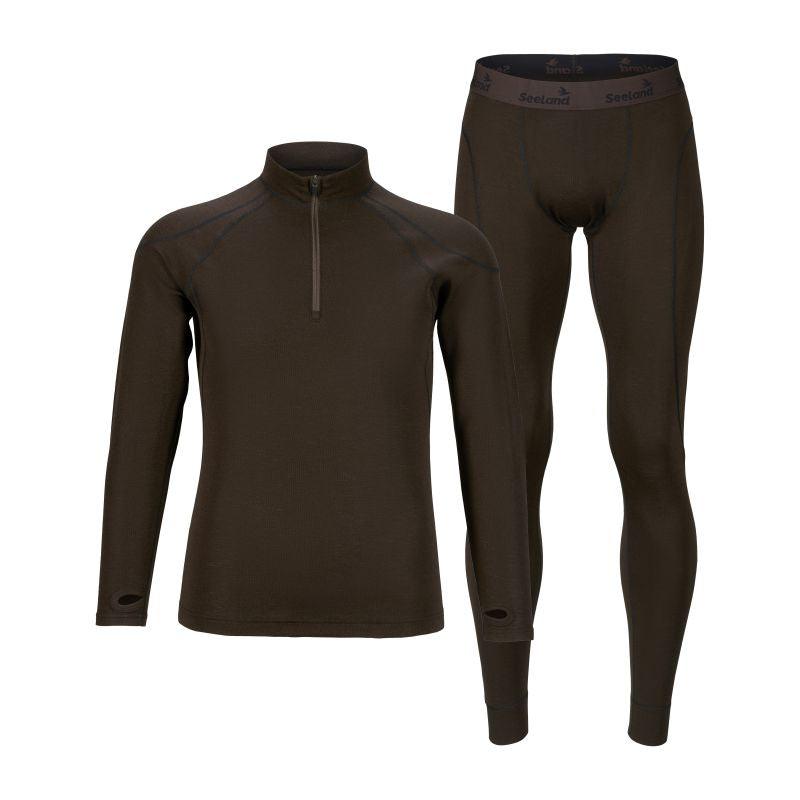Great Merino Wool Base Layer Site
Wiki Article
Why Are Yak Merino Wool Base Layers Effective For Winter Sport Clothing In Terms Of Natural Fiber Benefits?
Natural fibers are a fantastic option for base layers of winter sports apparel, and not only for their performance but also their environmental sustainability.
Yak wool and merino fibres are both derived from natural fibers. They are renewable resources that can be sustainably harvested without harming animals. They are biodegradable, meaning they are broken down naturally and without causing environmental harm.
Low Environmental Impact
Natural fibers typically have less environmental impact than synthetic fibers. The process of harvesting and cultivation of wool involves lesser chemical processing, and is less dependent on renewable resources in comparison to synthetic fibers.
Energy Efficiency
The processing of wool fibers uses less energy than synthetic fibers that are produced like nylon and polyester. Natural wool production is energy efficient, which results in a lower carbon footprint.
Reduced Microplastic Pollution
Wool fibers contribute less to microplastic contamination of water bodies than synthetic fibers. Synthetic fibers shed microplastics while being washed.
The Longevity & Recyclability of Plastics
Yak merino clothes are usually sturdy and last for a lengthy duration. The wool fibers can also be recycled and reused. This helps reduce waste as well as the environmental impact.
Sustainable Practices
Certain wool producers and manufacturers adhere to sustainable and ethical practices, ensuring animal welfare, responsible land management, and fair working conditions for the workers in the process of production.
Environmental Certification-
Certifications such as the Responsible Wool Standard and the Global Organic Textile Standard verify ethically and environmentally responsible practices used to produce wool. This provides consumers with confidence regarding sustainability.
In general, base layers made from yak wool are low-impact on the environment. They're produced using renewable resources, and are based on the highest standards of sustainability and ethical conduct in their entire supply chain. The use of natural fibers such as yak merino wool in winter sport clothing supports environmentally friendly and responsible consumption practices. Check out the most popular helpful hints about merino wool base layer for site tips including icebreaker baselayer, icebreaker baselayer, smartwool long johns, best merino wool base layer, heavyweight merino wool base layer, sitka base layers, merino wool mid layer, smartwool base layer, smartwool long sleeve, smartwool merino base layer and more.

What Are The Advantages Of Bamboo Clothing In Terms Of Softness And Antibacterial Properties Durability, Renewability, And Durability.
Bamboo clothing offers many advantages such as the softness. Its antibacterial qualities. Durability. It also has the ability to renew.
Luxurious Feel- Bamboo fabric is known for its silky and soft texture. It is often compared to extravagant materials like silk or cashmere. It feels soft and smooth against the skin. This makes it an extremely comfortable and pleasant fabric to wear.
Antibacterial Properties
Bamboo has antimicrobial properties that are naturally. This ingredient is referred to as "bamboo Kun." This property assists in preventing the growth of bacteria that cause odor or fungi, as well as mold on the bamboo.
Durability-
The strength of bamboo fibres although soft, can be robust and durable. Bamboo clothing is not prone to tearing and wear. This makes bamboo the ideal material for many tasks.
Renewability-
Rapid Growth Bamboo is a plant that is fast growing and is not a requirement for pesticides. Bamboo can be harvested in only a few years, and has a minimal environmental impact.
Sustainability-
Eco-Friendly Production - Bamboo production and cultivation has less environmental impacts as compared to synthetic materials. Bamboo's rapid growing as well as its low need for water and the ability to thrive in diverse conditions make it a sustainable material.
Biodegradability-
Natural Breakdown - Bamboo garments are biodegradable. This means that they will degrade themselves in a natural manner after the end of their life-cycle. This reduces the amount of waste that is not biodegradable in landfills, and reduces the environmental impact.
Hypoallergenic Qualities-
Bamboo fabric is less prone to chance of causing skin irritations or allergic reactions than some synthetic fabrics. This makes it a perfect choice for people who have sensitive skin.
The combination of the softness and antibacterial properties, as well as resilience, renewalability and sustainability make bamboo clothing an appealing option for those seeking practical, comfortable and eco-friendly clothing. These qualities make for a comfortable and environmentally friendly experience. Read the recommended read this post here about bamboo clothing for site info including men bamboo boxer shorts, bamboo under wear, men bamboo boxer shorts, bamboo fibre clothing, bamboo maternity, bamboo cay shirts christmas, bamboo clothing underwear, bamboo cotton shirts, boody bamboo underwear, bamboo hoodie women's and more.

How Do Merino Layers And Bamboo Clothing Differ From Eachother And Regular Wool?
Merino wool layers, bamboo clothing, and regular wool possess distinct characteristics that distinguish them from other wools. Merino Wool-
Merino's soft, silky fibers make it easy on your skin. It's less likely than wool that is more traditional to cause irritation and itching.
Merino wool is moisturizing. Merino wool wicks moisture away from the skin, allowing it evaporate, keeping the wearer comfortable and dry.
Merino Wool is a great insulation and provides warmth even when wet. It regulates body temperature and provides warmth in cold conditions and breathability to avoid excessive heat during exercise.
Odor Resistance - It naturally prevents the growth of bacteria responsible for odor making clothes fresher even after long wear.
Bamboo Clothing
Softness Bamboo clothing is silky soft feel which is often described as silk or cashmere. Bamboo clothing is gentle on the skin, offering a luxurious sensation.
Bamboo fabric is moisture-wicking and has properties that pull moisture away from your body and keeps you dry while exercising.
Temperature Regulation- Bamboo clothing has natural temperature-regulating abilities, offering warmth in winter and breathability to prevent overheating.
Sustainability - Bamboo is a resource that is highly renewable, and it grows quickly, without the use of pesticides. It's biodegradable and has a very low environmental impact.
Regular Wool
Texture. The classic wool texture can vary. Certain types of uncomfortable or itchy textures are more coarse.
Warmth - Regular wool provides great insulation and warmth, however, it can be heavy or bulky.
Wool absorbs moisture, and is therefore less effective at drying moisture than merino or bamboo fabrics. It can retain the heat, even if it's moist.
Merino offers softness and excellent moisture-wicking. It is also immune to smells. Bamboo clothing offers a silky texture, moisture-wicking abilities as well as temperature control and long-term sustainability. Regular wool differs in texture. It may not be as soft or have the same ability to wick moisture as bamboo or merino however, it provides warmth. Each material is unique and caters to different winter clothing preferences. Have a look at the most popular bamboo winter clothing advice for blog tips including sweaty betty base layers, patagonia merino wool base layer, wool long underwear, icebreaker merino wool base layer, smartwool 250, womens icebreaker base layer, best thermal underwear for skiing, wool base layer mens, wool thermals, smartwool 1 4 zip and more.
